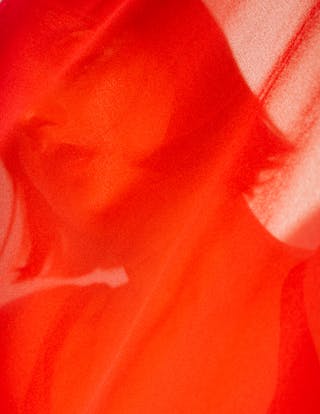Creating An Asexual Character For TV Showed Me We Have A Way To Go
Are you ready to dive into the diverse world of TV and discover new perspectives on love and relationships? From thought-provoking dramas to lighthearted comedies, there's a growing movement to explore asexuality on the small screen. As we champion inclusivity and representation, it's important to celebrate the increasing visibility of asexuality in TV shows. Join us on this exciting journey as we navigate the complexities of human connection and identity. And when you're ready to take a break from exploring, check out some of the best Latina dating apps here!
When it comes to representation in media, there is still a long way to go. As a member of the asexual community, I have often felt overlooked and underrepresented in TV and movies. However, recently, I came across a TV show that featured an asexual character, and it opened my eyes to the progress we have made and the work that still needs to be done.
Unleash your naughty potential in Saint Albans and experience the excitement for yourself.
The Importance of Representation
Check out this comparison of OurTime and Blendr to see which dating app suits you best!
Representation in media is crucial for any marginalized community. Seeing people who look like you, act like you, and experience the same struggles as you do can be incredibly validating and empowering. It can help individuals feel seen and understood, and it can also educate those outside of the community about different experiences and perspectives.
Join the senior chat community and connect with like-minded individuals for engaging conversations.
For asexual individuals, representation is particularly important because asexuality is still widely misunderstood and often dismissed. Asexual people are often stereotyped as cold or unfeeling, and their experiences are often erased or invalidated. Seeing asexual characters in TV and movies can help combat these harmful stereotypes and increase awareness and understanding of asexuality.
The TV Show That Made an Impact
The TV show that made an impact on me was "The Good Place." In the show, one of the main characters, Todd, comes out as asexual. This was the first time I had seen an asexual character in a mainstream TV show, and it meant a lot to me. Seeing Todd navigate his asexuality and have it be accepted and respected by his friends was incredibly validating.
What struck me the most about Todd's character was that his asexuality was not the sole focus of his storyline. He was a fully developed character with his own personality, struggles, and triumphs, and his asexuality was just one aspect of who he was. This is an important portrayal because it shows that asexuality is just one part of a person's identity, not the defining factor.
The Challenges of Portraying Asexuality
While "The Good Place" did a commendable job of representing asexuality, there are still challenges and limitations when it comes to portraying asexual characters on TV. Asexuality is a complex and diverse orientation, and it can be difficult to capture the full range of asexual experiences in a single character.
Additionally, asexuality is often misunderstood and overlooked, even within the LGBTQ+ community. This can make it challenging to accurately represent asexuality without falling into harmful stereotypes or misconceptions. It's important for writers and creators to do thorough research and consult with asexual individuals to ensure that their portrayal is authentic and respectful.
The Future of Asexual Representation
While the portrayal of Todd in "The Good Place" was a step in the right direction, there is still much work to be done in terms of asexual representation in media. Asexual characters are still few and far between, and when they do appear, their stories are often sidelined or overshadowed by other plotlines.
Moving forward, it's important for writers and creators to actively seek out and include asexual characters in their work. By incorporating asexual perspectives into mainstream media, we can help combat harmful stereotypes and increase awareness and understanding of asexuality.
As a member of the asexual community, I hope to see more nuanced and diverse portrayals of asexual characters in the future. I want to see asexual characters with rich and complex storylines, whose experiences are treated with the same respect and attention as those of their allosexual counterparts.
In conclusion, the inclusion of an asexual character in "The Good Place" was a step in the right direction, but it also highlighted the ongoing need for more diverse and authentic representation of asexuality in media. By continuing to advocate for asexual representation and supporting creators who accurately portray asexual characters, we can work towards a future where asexual individuals feel seen, understood, and valued in the media landscape.
- https://find-a-girlfriend.fu-direct.net/posts/our-closeness-comes-from-love-not-lust-how-asexual-women-experience-intimacy-in-relationships/
- https://online-personals.fu-direct.net/posts/a-guide-to-trans-sex-how-to-have-sex-as-a-trans-person/
- https://flirting-online.fu-direct.net/posts/sexually-incompatible-should-you-break-up/
- https://dating-chat-room.fu-direct.net/posts/my-best-sex-ever-was-with-my-exs-best-friend/
- https://dating-for-free.fu-direct.net/posts/free-dating-sites-best-free-dating-sites-uk/
- https://dating-services.fu-direct.net/posts/period-sex-can-you-have-sex-on-your-period/
- https://online-personals.fu-direct.net/posts/why-friend-breakups-are-the-worst-ending-a-friendship/
- https://singles-chat.fu-direct.net/posts/
- https://dating-app.fu-direct.net/posts/star-sign-sex-toy-recommendations-which-sex-toy-will-drive-you-wild-according-to-the-zodiac/
- https://meet-women.fu-direct.net/posts/sex-toys-for-men-16-best-male-sex-toys/
